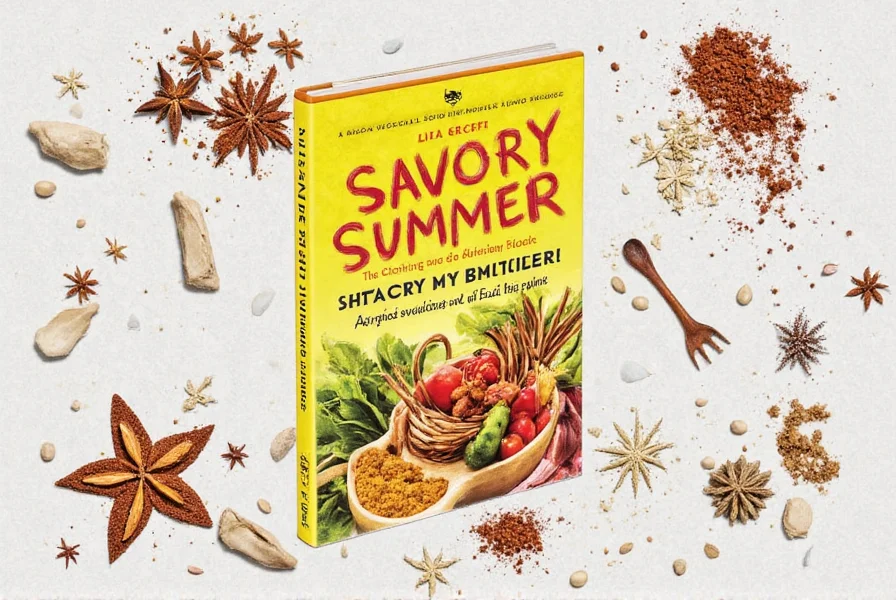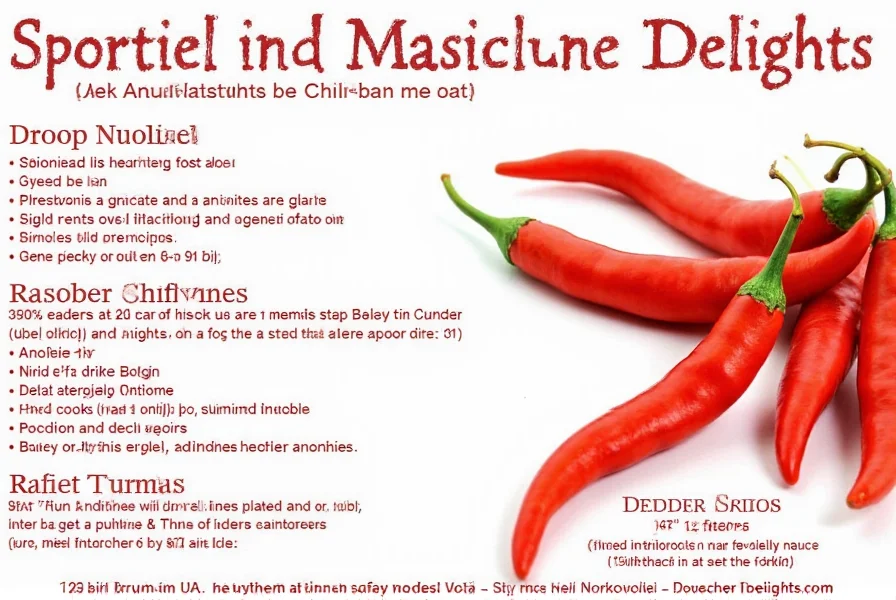Table of Contents
Introduction to Chili Recipes
Chili recipes are a beloved staple in many cuisines around the world, known for their bold flavors, warmth, and versatility. Whether you're a seasoned chef or just starting out in the kitchen, there's something incredibly satisfying about cooking up a pot of spicy, savory chili that fills your home with an irresistible aroma.
From classic American-style chili to fiery Mexican salsas and rich Indian curries, the world of chili recipes is vast and exciting. In this guide, we'll explore the basics of chili, share practical tips for making your own, and provide a detailed recipe to try at home.

Understanding the Basics of Spices
Spices are the heart of any good chili recipe. They bring depth, complexity, and that unforgettable heat that makes chili so special. Here's a quick rundown of the most common spices used in chili:
| Spice | Description | Flavor Profile |
|---|---|---|
| Chili Powder | A blend of ground chilies and other spices | Smoky, earthy, slightly sweet |
| Cumin | Dried seeds of the cumin plant | Earthy, nutty, warm |
| Paprika | Dried and ground red peppers | Smoky, sweet, mild |
| Garlic Powder | Dried garlic | Strong, pungent, savory |
| Oregano | Dried leaves from the oregano plant | Bitter, aromatic, slightly sweet |
These spices can be used alone or in combination to create a variety of chili styles. For example, adding a pinch of cumin and paprika gives a more traditional Mexican flavor, while using chili powder and oregano adds a classic American touch.

Practical Tips for Making Chili
Whether you're making chili from scratch or using a pre-made mix, these tips will help you create a delicious and flavorful dish every time:
- Start with quality ingredients: The better the base ingredients, the better the final result. Use fresh vegetables, high-quality meat (or a hearty vegetarian alternative), and real spices, not artificial flavorings.
- Build layers of flavor: Don't rush the cooking process. Sauté onions, garlic, and spices first to release their aromas, then add the main ingredients like beans, tomatoes, and meat. Let everything simmer together to allow the flavors to meld.
- Adjust the heat level: Chili can be as spicy as you want it to be. Start with a small amount of chili powder or fresh chilies and taste as you go. You can always add more, but you can't take it away once it's in.
- Experiment with textures: Some people love a thick, stew-like chili, while others prefer a thinner, soupier version. Adjust the amount of liquid (like broth or water) to get the consistency you like.
- Let it rest: After cooking, let your chili sit for a few minutes before serving. This allows the flavors to settle and intensify, making the dish even more delicious.

Buying Guide for Chili and Spices
Choosing the right chili and spices is crucial for a great chili recipe. Here's a breakdown of some popular options and their best uses:
| Product | Features | Advantages | Use Cases | Target Audience | Suitable Occasions |
|---|---|---|---|---|---|
| Chili Powder | Ready-to-use spice blend | Convenient, versatile, easy to measure | Perfect for beginners or quick meals | Home cooks, busy professionals | Weeknight dinners, game days |
| Ground Cumin | Finely ground cumin seeds | Enhances flavor, adds depth | Great for authentic recipes | Intermediate cooks, spice lovers | Mexican-inspired meals, family gatherings |
| Smoked Paprika | Made from smoked red peppers | Adds smoky richness, no heat | Ideal for grilled meats or stews | Barbecue enthusiasts, gourmet chefs | BBQ parties, holiday feasts |
| Chipotle in Adobo | Smoked jalapeños in a tangy sauce | Deep, smoky heat, complex flavor | Excellent for adding depth to chili | Advanced cooks, spice adventurers | Special occasions, dinner parties |
If you're new to chili-making, start with a good quality chili powder and build from there. For more experienced cooks, experimenting with different types of chilies and spices can elevate your dishes to the next level.

The Ultimate Chili Recipe
Now that you know the basics, let's dive into a tried-and-true chili recipe that's perfect for any occasion. This recipe includes all the essential spices and is easy to customize based on your preferences.
Ingredients
- 1 lb ground beef or turkey
- 1 onion, diced
- 2 cloves garlic, minced
- 1 can (15 oz) kidney beans, drained and rinsed
- 1 can (15 oz) black beans, drained and rinsed
- 1 can (15 oz) tomato sauce
- 1 can (15 oz) diced tomatoes
- 2 tbsp chili powder
- 1 tbsp ground cumin
- 1 tsp paprika
- 1/2 tsp garlic powder
- 1/2 tsp oregano
- 1/4 tsp cayenne pepper (optional)
- Salt and pepper to taste
- 1 cup beef or vegetable broth
Instructions
- In a large pot or Dutch oven, cook the ground meat over medium heat until browned and crumbled. Drain excess fat if needed.
- Add the onion and garlic to the pot and sauté for 2–3 minutes until softened.
- Stir in the chili powder, cumin, paprika, garlic powder, oregano, and cayenne pepper (if using). Cook for another minute to toast the spices.
- Add the beans, tomato sauce, diced tomatoes, and broth. Stir well to combine.
- Bring the mixture to a boil, then reduce the heat and let it simmer for 20–30 minutes, stirring occasionally.
- Season with salt and pepper to taste. Serve hot, optionally with toppings like cheese, sour cream, or chopped cilantro.
This chili recipe is a crowd-pleaser and can be adjusted to suit your taste. Want it spicier? Add more cayenne or a fresh jalapeño. Like it milder? Skip the cayenne and use less chili powder. The key is to have fun and experiment!

Frequently Asked Questions About Chili Recipes
What is the difference between chili and chilli?
Both spellings are correct and refer to the same dish. "Chili" is the more common spelling in American English, while "chilli" is often used in British English. The dish originated in the American Southwest, and the spelling varies by region and personal preference.
Can I make chili without meat?
Absolutely! You can make delicious vegetarian or vegan chili by substituting the meat with extra beans, lentils, or plant-based meat alternatives. Simply follow the same recipe steps but skip the meat browning step and use vegetable broth instead of beef broth.
How long does chili last in the refrigerator?
Properly stored in an airtight container, chili will last 3-4 days in the refrigerator. One of the great things about chili is that the flavors often improve the next day as the ingredients continue to meld together.
Can I freeze chili?
Yes, chili freezes very well. Store it in freezer-safe containers or bags for up to 3 months. When ready to eat, thaw in the refrigerator overnight and reheat on the stove or in the microwave.
Why is my chili too watery?
If your chili is too thin, try one of these solutions: 1) Simmer it uncovered for 15-20 minutes to reduce the liquid, 2) Mix 1 tablespoon of cornstarch with 2 tablespoons of cold water and stir it into the chili, or 3) Mash some of the beans against the side of the pot to thicken the mixture naturally.
How can I make my chili less spicy?
If your chili is too hot, try adding dairy products like sour cream or yogurt when serving. During cooking, you can add more tomatoes, beans, or broth to dilute the heat. A small amount of sugar or honey can also help balance the spiciness.
What are the essential spices for chili?
The core spices for most chili recipes include chili powder, cumin, and paprika. Garlic powder, oregano, and cayenne pepper are also common additions. The specific blend can vary based on regional styles and personal preference.
Can I use fresh chilies instead of chili powder?
Yes! You can substitute fresh chilies for some or all of the chili powder. For every tablespoon of chili powder, you can use 1-2 fresh jalapeños or serrano peppers (depending on desired heat level). Remember that fresh chilies will provide a different flavor profile than dried chili powder.
Conclusion
Chili recipes are more than just a meal—they're a celebration of flavor, culture, and community. Whether you're cooking for yourself, your family, or friends, a good chili is always a hit. With the right spices, a bit of patience, and a dash of creativity, you can make a chili that's both comforting and exciting.
Remember, the best chili recipes come from personal touches and experimentation. So grab your favorite spices, follow the tips above, and don't forget to enjoy the process. After all, the best chili is the one you make with love—and maybe a little extra heat.











 浙公网安备
33010002000092号
浙公网安备
33010002000092号 浙B2-20120091-4
浙B2-20120091-4